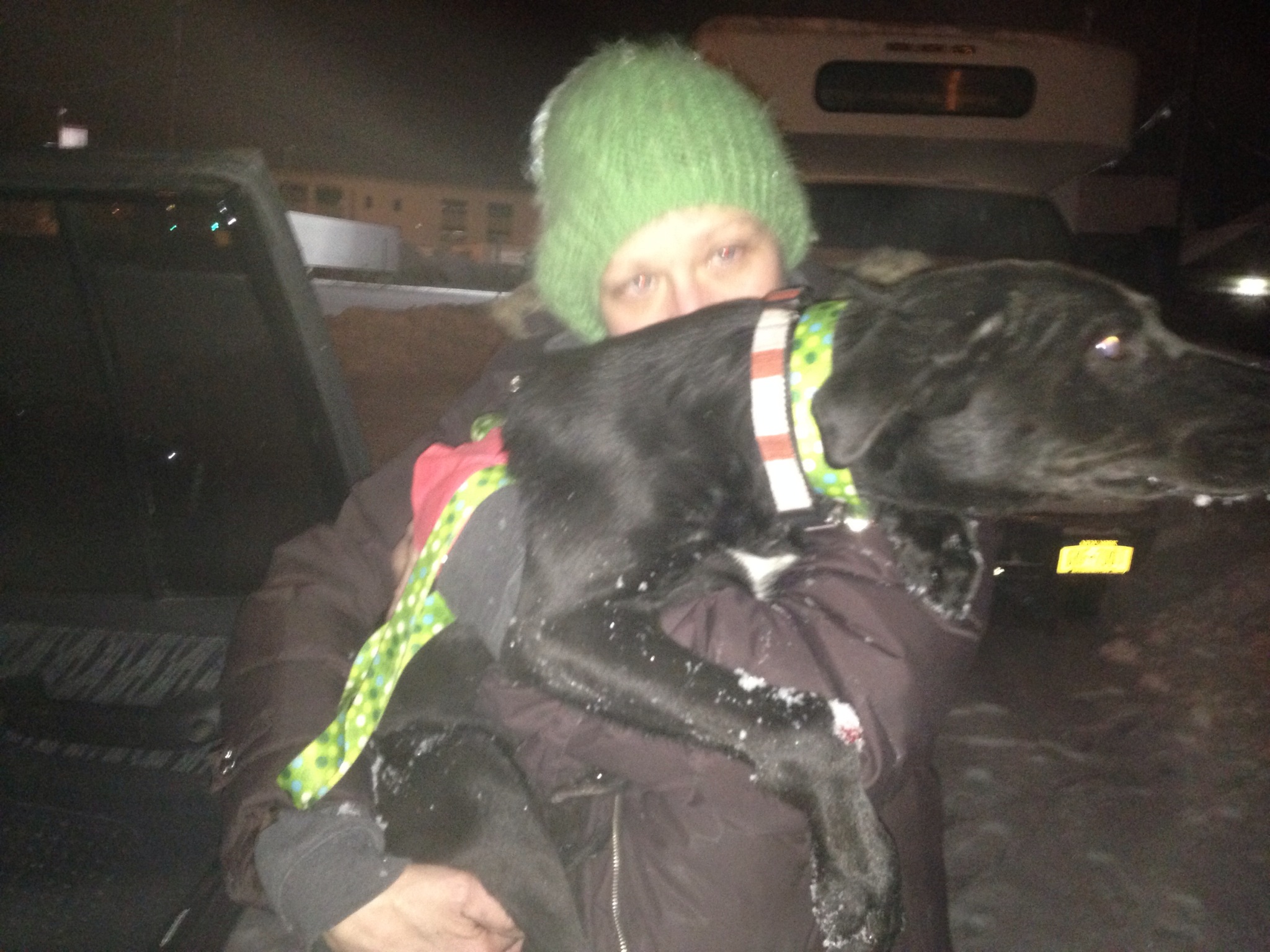Last night, Jenn and I had quite a little adventure. We had gone with Ted to see Is the Man Who Is Tall Happy? at the Dryden and drove him back home. On the way back to Jenn's I spotted a dog standing in the snow off 490 near the Averill underpass.
Going back a few days, while Jenn was working at her studio, a woman came by and handed her a poster about a lost dog named Ivy [corrected1]. We see notices for lost pets and pay them little mind other than to hope the animal gets home okay. But Ivy was a rescued black Labrador retriever mix from a shelter in Kentucky. The reason we paid attention is sheer coincidence: Jenn's dog is also a black lab, and was also a rescue from—of all places—Kentucky. Ivy had just arrived and escaped from an Another Chance Pet Rescue foster family near Meigs and Monroe just a day after she arrived (they didn't know the dog's name so they named her Ivy … for all of a day, so obviously the dog wouldn't respond to that name.) The poster said that she was so timid that we should not try to approach her as she'd just run away.
Anyway, when we saw this black dog, we immediately thought it might be Ivy. So we got off at Goodman and went to go back to see off an overpass. But then I figured our best bet would be to get back on the highway, so after trying to remember the existence of the Byron Street entrance, we passed the poster on Alexander. I snapped a picture so we could have the phone numbers. We got back on but we saw neither the dog nor her prints. So we looped around again. This time, we found the tracks in the snow just behind the Spring Steel place on S. Clinton.
We called the people on the poster and they said they'd send their friends out. I had my headlamp from biking so I put that on and went up the embankment cautiously. I had noticed in the past I could see animal eyes in the darkness using the headlamp. After searching a bit, I found a pair of eyes looking back at me from under a tree near the building.
I went back and called again and really set things in motion. They called Animal Control to try and catch the dog, and sent a half-dozen people our way to help find her. One of the women affiliated with Operation Greece Pug Rescue and the officer from Animal Control arrived nearly simultaneously. We went up the embankment and found the dog—this time positively identified as Ivy. Unfortunately, she did manage to get away.
But she had been in the elements for about 7 days already, so she wasn't moving too fast. I watched her cross under Averill then continue to past Alexander before I lost sight of her, all the while fortunately staying in the snow and out of traffic. Jenn and I got back in the car and looped around again. We found Ivy just about on the entrance ramp. We stopped the car to call that we saw her, but she started running back. We followed her and tried to keep some distance, but she doubled back again and we lost her.
We got in touch with the Animal Control officer and one of the women involved. The officer provided a can of food for the dog and they were planning to set a live trap over night. We left and decided to see if we could find her again. We stopped in the Goodwill parking lot to look for tracks on Byron Street and found some, but no dog.
We got back to the car and called the woman from the Pug Rescue to say we were going home. She said that they had her—they actually caught Ivy. She was badly dehydrated, had hypothermia, and was on her way to the pet emergency center! It turns out she also had a laceration on her leg and a possible fracture.
By today she was out of emergency care and it looks like she's going to survive. She'll need some more veterinary care in the coming weeks. If you want, you can donate through the PayPal link on the lower-right of the Another Chance Pet Rescue website.
1 2014-Feb-13: Correction: it wasn't her mom who gave her the poster, but her mom was present.

